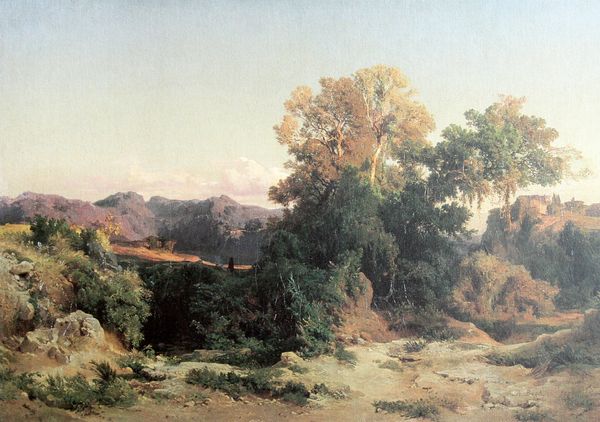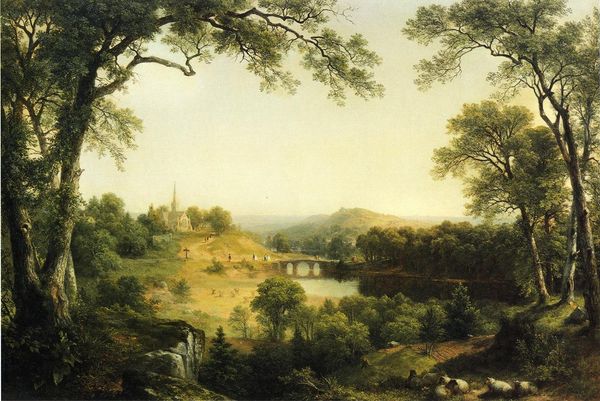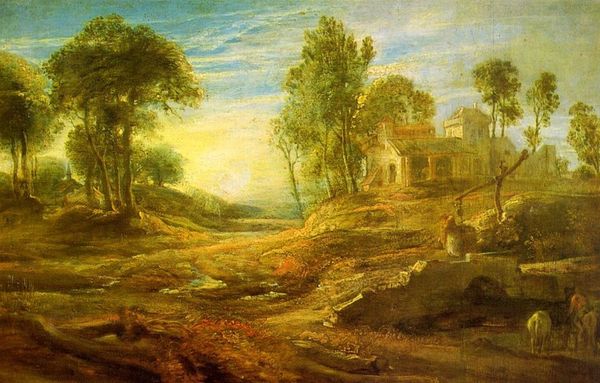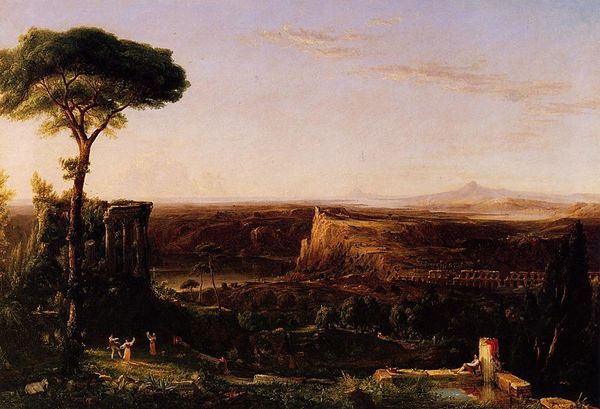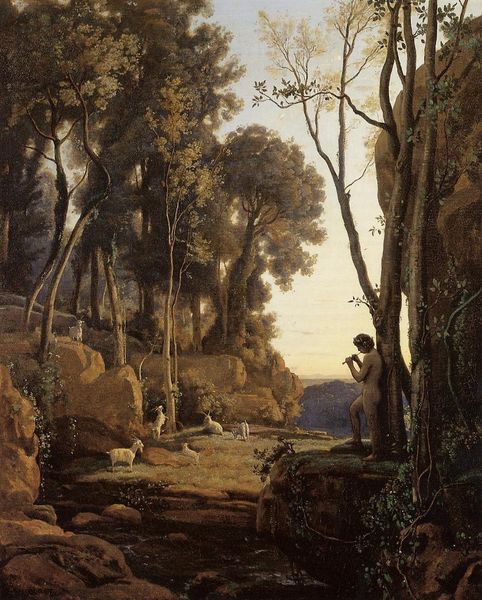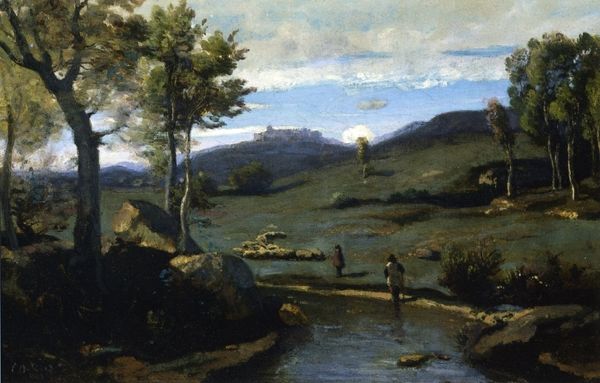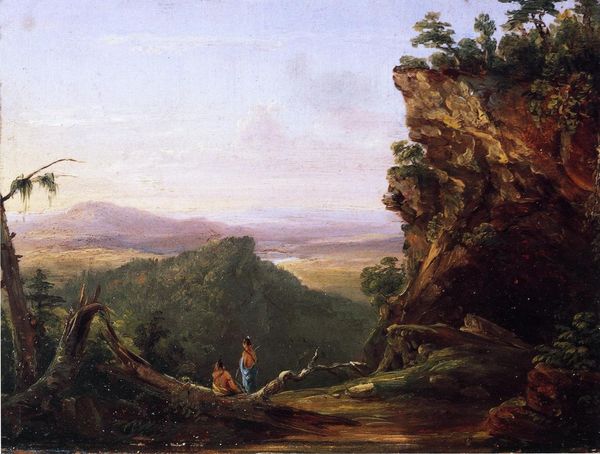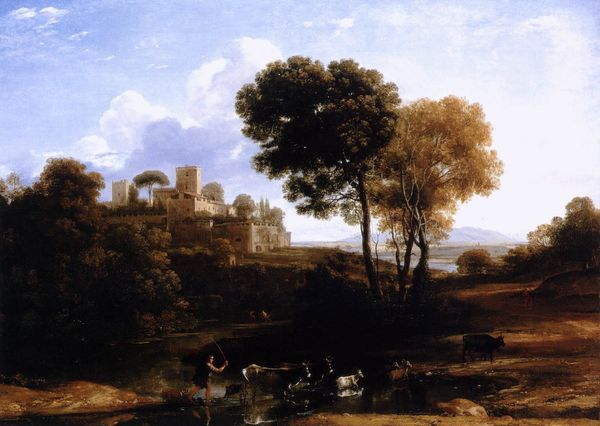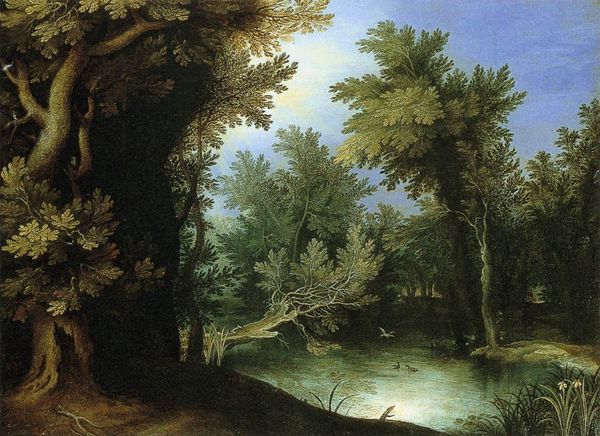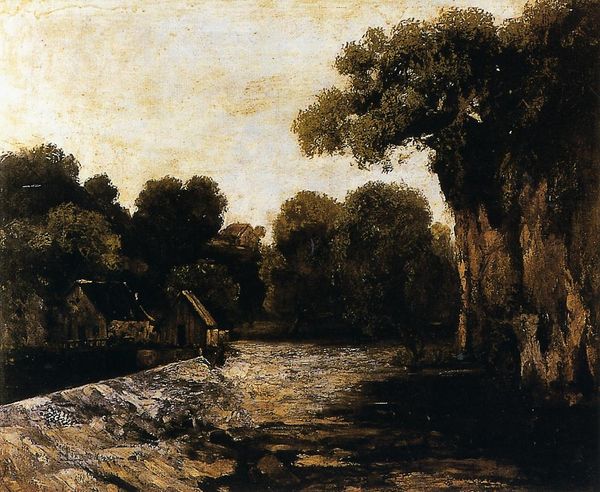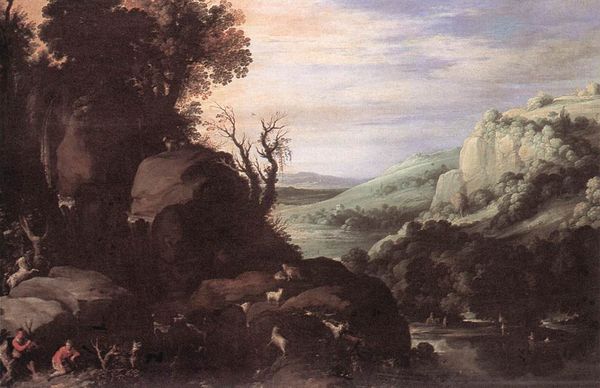
painting, plein-air, oil-paint
#
painting
#
plein-air
#
oil-paint
#
landscape
#
oil painting
#
romanticism
#
cityscape
#
history-painting
Copyright: Public domain
Editor: We're looking at "The Pont de Narni," painted by Camille Corot in 1827. It's an oil painting. It feels very idyllic, almost like a dreamscape, with that broken bridge in the background. What stands out to you in this piece? Curator: The interplay of light and shadow, especially across the forms of the bridge and foliage, is particularly striking. Note how Corot divides the composition. Can you observe how he balances the verdant foreground with the misty distance? Editor: I see that now! There's a clear contrast in textures too. The foreground feels rougher, more defined, while the background fades into softer, less distinct shapes. It almost separates two distinct aesthetic spaces on the plane. Curator: Precisely. Observe the color palette as well. Notice how the earthy browns and greens are subtly augmented by the silvery tones of the water and the sky. What effect does this limited range achieve? Editor: It creates a sense of harmony, I think. Everything seems to blend together seamlessly, nothing really jumps out but it has a depth. The painting isn’t trying to create drama; rather it captures a scene of serenity. Curator: The painting achieves an atmosphere of serene equilibrium. Is that what attracts you? How would this composition succeed or fail with an alternate set of colors? What effect could it achieve through alternate materials? Editor: That's really insightful! Now, I understand how every compositional element plays a crucial role in creating that feeling. Curator: Indeed. Corot’s Pont de Narni, when viewed through the lens of pure form, reveals a masterclass in achieving tranquility through pictorial construction.
Comments
No comments
Be the first to comment and join the conversation on the ultimate creative platform.
